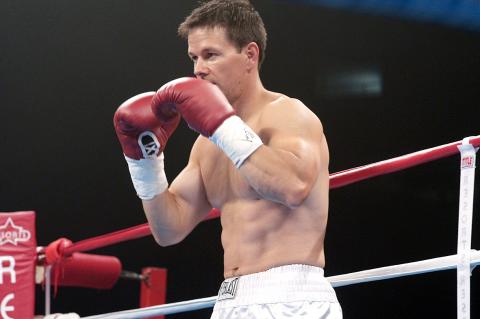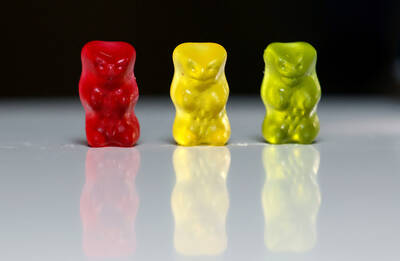The Fighter, which stars Mark Wahlberg as a boxer aiming at the big time against long odds, immediately draws comparisons with Rocky and suggests a string of other titles about sportsmen fighting circumstances and inner demons to get to the top. It’s achievement is that it stubbornly plows its own furrow, refusing, for the most part, to get caught up in the well-worn rut of the inspirational sports movie.
This achievement is much to the credit of Wahlberg, who plays “the fighter” of the title, and who also has a producer credit on the film. In Rocky, Sylvester Stallone is both the face and the beating heart of the film, and everything else is subservient to building up the central character as a heroic figure touched in his own way by the finger of God. Wahlberg subverts this model by underplaying his part in a manner that allows other characters to shine. By making The Fighter an ensemble effort, Wahlberg helps turn the film away from being about one man’s struggle and makes it something much more — the story of an embattled community that has been bankrupted from within.
Wahlberg plays Micky Ward, a young boxer living under the shadow of his older half-brother. Dicky reached the periphery of the big time and now relives, on continual loop, his one great moment when he maintains he knocked down Sugar Ray Leonard. (Others argue that Sugar Ray slipped, but Dicky is only interested in his own version of the story). The two brothers are well-known characters around the town of Lowell, Massachusetts, a once mighty industrial town that by the last decades of the last century had been gutted, first by the Great Depression and then by the relocation of American industry.

Photo courtesy of CatchPlay
Dicky, played by Christian Bale, is an exuberant character juggling a crack habit with his responsibilities as man of the family and Micky’s trainer. He gives Micky plenty of encouragement and — when he makes it to training — provides his brother with good advice. But he and mother Alice (Melissa Leo), Micky’s manager, are bit players in the big-money boxing game. While they convince themselves that they are fighting in Micky’s corner, what they are really doing is falling for short-term payoffs from more astute boxing interests who see Micky as nothing more than cannon fodder for boxers working their way to the top.
Time and again, the stubborn, loyal and none-too-bright Micky goes up against ridiculous odds and gets a mauling, and gradually even he begins to see that things are not right. He recognizes that he has more talent than his nominally closest supporters give him credit for. He finds other supporters in the shape of Charlene Fleming (Amy Adams), who works behind the bar at the local watering hole, and Mickey O’Keefe (played by himself), a local cop who thinks Micky deserves better. They convince Micky that success in boxing is not about family loyalty but a combination of funding and training. Knives are drawn between Micky’s mum Alice and girlfriend Charlene, and this fight is as fierce as anything that takes place in the boxing ring.
Bale and Leo, as the negative forces in Micky’s life, have the best roles. We enjoy watching them even as we see how, between Alice’s narrowly parochial view of the world and Dicky’s drug habit, they are destroying the person they purport to be helping. Bale’s performance, which might easily have been annoyingly showy as the star turn, is perfectly judged to play off Wahlberg’s low-key take on Micky, and it is a testament to Wahlberg’s generosity as a performer that he does not hog the limelight.
Although the film ends with the usual climactic fight of all such movies, the stakes in The Fighter are different. Micky has certainly overcome both his opponent and his background to win, but more importantly there is also a passing of the mantle from elder to younger brother, a casting off of comforting illusions and a note of hope that even from the most dejected environments, a tough-minded commitment to success will win through. The inspirational finale is still there, but it celebrates more than victory in the ring.

The canonical shot of an East Asian city is a night skyline studded with towering apartment and office buildings, bright with neon and plastic signage, a landscape of energy and modernity. Another classic image is the same city seen from above, in which identical apartment towers march across the city, spilling out over nearby geography, like stylized soldiers colonizing new territory in a board game. Densely populated dynamic conurbations of money, technological innovation and convenience, it is hard to see the cities of East Asia as what they truly are: necropolises. Why is this? The East Asian development model, with

June 16 to June 22 The following flyer appeared on the streets of Hsinchu on June 12, 1895: “Taipei has already fallen to the Japanese barbarians, who have brought great misery to our land and people. We heard that the Japanese occupiers will tax our gardens, our houses, our bodies, and even our chickens, dogs, cows and pigs. They wear their hair wild, carve their teeth, tattoo their foreheads, wear strange clothes and speak a strange language. How can we be ruled by such people?” Posted by civilian militia leader Wu Tang-hsing (吳湯興), it was a call to arms to retake

This is a deeply unsettling period in Taiwan. Uncertainties are everywhere while everyone waits for a small army of other shoes to drop on nearly every front. During challenging times, interesting political changes can happen, yet all three major political parties are beset with scandals, strife and self-inflicted wounds. As the ruling party, the Democratic Progressive Party (DPP) is held accountable for not only the challenges to the party, but also the nation. Taiwan is geopolitically and economically under threat. Domestically, the administration is under siege by the opposition-controlled legislature and growing discontent with what opponents characterize as arrogant, autocratic

Desperate dads meet in car parks to exchange packets; exhausted parents slip it into their kids’ drinks; families wait months for prescriptions buy it “off label.” But is it worth the risk? “The first time I gave him a gummy, I thought, ‘Oh my God, have I killed him?’ He just passed out in front of the TV. That never happens.” Jen remembers giving her son, David, six, melatonin to help him sleep. She got them from a friend, a pediatrician who gave them to her own child. “It was sort of hilarious. She had half a tub of gummies,